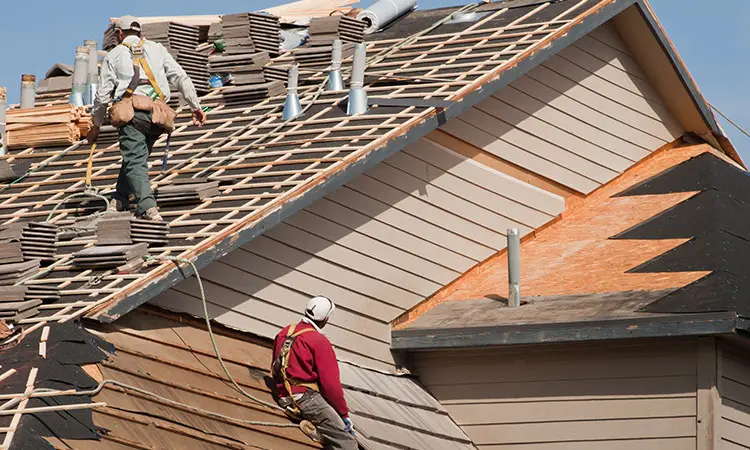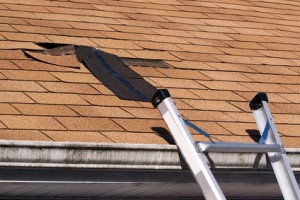Understanding the Different Sorts Of Roofings: A Comprehensive Guide for Homeowners
In the realm of homeownership, picking the suitable roof covering design is a choice that carries significant ramifications for both performance and visual charm. With a range of options-- ranging from the typical gable to the contemporary flat-- each type provides one-of-a-kind advantages and obstacles that ought to align with the house owner's certain requirements and ecological factors to consider. Comprehending these differences not just help in making an informed selection however additionally influences long-term upkeep and energy performance. As we discover the intricacies of various roof kinds, it ends up being obvious that dimension does not fit all; the best selection might amaze you.
Saddleback Roof
Gable roofings, defined by their triangular shape, are among one of the most popular roof designs due to their simpleness and performance in losing water and snow. This style includes two sloping sides that satisfy at a ridge, enabling reliable drain and decreasing the threat of water accumulation. The steep pitch generally connected with gable roofs boosts their capacity to deal with heavy rainfall, making them appropriate for various climates.
Along with their useful advantages, saddleback roofs supply visual versatility. They can be adapted to numerous architectural designs, from standard to modern-day homes. The design can likewise suit added attributes such as dormer windows, which improve natural light and air flow in the attic room room.
Moreover, gable roofs provide enough room for insulation, contributing to energy efficiency. House owners can select from a range of roof covering materials, including asphalt roof shingles, steel, and ceramic tiles, further boosting personalization choices.
In spite of their advantages, gable roofing systems may require extra support in locations prone to high winds or heavy snowfall. Overall, the saddleback roof remains a favored choice because of its mix of capability, resilience, and aesthetic allure.
Apartment Roofs
Flat roofs are often recognized for their minimal layout and useful applications, especially in industrial and industrial settings (oahu roofing). These roofing systems include a almost horizontal or straight surface, which enables very easy building and construction and versatile room utilization. While they may lack the visual charm of pitched roofing systems, flat roof coverings use countless benefits, particularly in city environments where taking full advantage of space is vital
One of the key benefits of level roofs is their accessibility. Homeowners can make use of the roofing system space for numerous functions, such as roof yards, balconies, or solar panel setups. Additionally, flat roofing systems are normally much more cost-effective to keep and mount compared to their sloped equivalents, as they need fewer materials and labor.
Nonetheless, flat roofing systems do existing particular obstacles. Appropriate water drainage is important to stop water merging, which can cause leakages and architectural damage. Therefore, choosing high-grade waterproofing materials and normal examinations are crucial for making sure durability. Common products utilized for flat roof coverings consist of built-up roof (BUR), changed bitumen, and single-ply membranes, each offering distinctive benefits. In general, level roof coverings serve as a versatile and practical choice for many property owners and organizations alike.
Hip Roof Coverings
Hip roofs are identified by their sloped sides that assemble on top, developing a ridge. This style stands out from gable roofings, as all 4 sides of a hip roofing slope downwards toward the wall surfaces, offering a more stable framework. The angle of the slopes can differ, enabling flexibility in architectural aesthetics and performance.
Among the key benefits of hip roofing systems is their ability to endure hefty winds and adverse climate condition. The sloped surface areas enable better water drainage, decreasing the threat of leaks and water damage. Furthermore, hip roofings use boosted attic area, which can be made use of for storage and even exchanged livable locations.
However, constructing a hip roofing system can be more expensive and complex than simpler roof types, such as gable roofs. The added product and labor associated with creating the inclines and making sure correct architectural stability can result in higher costs. In spite of these drawbacks, several home owners prefer hip roofs for their toughness, visual appeal, and capacity for power efficiency.
Mansard Roof Coverings
Mansard roof coverings, often acknowledged by their one-of-a-kind four-sided layout, attribute two slopes on each side, with the reduced incline being steeper than the upper. This architectural style, stemming from France in the 17th century, is not only visually appealing but practical, as it makes the most of the usable space in the upper floorings of a building. The steep lower incline permits for even more clearance, making it an ideal choice for lofts or attic rooms, which can be exchanged living rooms.
Mansard roofing systems are characterized by their flexibility, fitting different architectural styles, from typical to modern. They can be built with various materials, consisting of asphalt tiles, slate, or metal, giving homeowners with a range of choices to fit their preferences and spending plans. In addition, the design enables the assimilation of dormer home windows, improving natural light and ventilation in the upper degrees.
Nevertheless, it is vital to think about the possible disadvantages. Mansard roofing systems may call for even more maintenance due to the complexity of their style, and their high slopes can be challenging for snow and best site rainfall drainage. Overall, mansard roofs combine style with practicality, making them a popular choice among home owners looking for unique building features.
Dropped Roof Coverings
As house owners progressively seek simplicity and performance in their architectural designs, shed roof coverings have actually arised as a prominent option. Identified by a single sloping airplane, a shed roofing system offers a minimalist aesthetic that matches different home styles, from contemporary to rustic.
Among the primary benefits of a shed roof is its straightforward building, which typically converts to lower labor and product costs. This style permits effective water drainage, minimizing the threat of leakages and water damages. Furthermore, the upright slope gives enough room for skylights, boosting all-natural light within the inside.
Lost roof coverings likewise provide flexibility in regards to use. They can be successfully integrated into additions, garages, or outdoor structures like pavilions and sheds. In addition, this roof design can accommodate different roof materials, consisting of steel, asphalt roof shingles, and even environment-friendly roofings, lining up with green campaigns.
Nevertheless, it is vital to take into consideration regional climate conditions, as hefty snow loads might demand modifications to the roofing's angle or structure. Generally, dropped roofings present a sensible and visually pleasing alternative for property owners seeking to optimize performance without endangering design.
Conclusion


Gable roof coverings, defined by their triangular form, are among the most prominent roof styles due to their simplicity and performance in dropping water and snow. oahu roofing. The steep pitch commonly associated with gable roofings boosts their capability to manage heavy rainfall, making them suitable for different environments
While they may lack the aesthetic appeal of pitched roofs, flat roofing systems offer many advantages, particularly in urban environments where maximizing area is critical.
